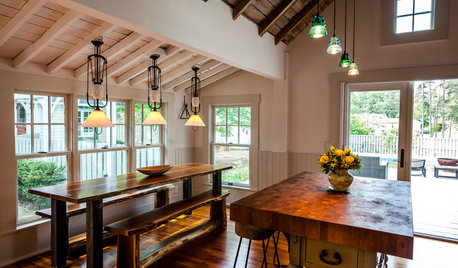I've seen here on GardenWeb a lot of people talking about turning their sod over when breaking in a new bed for their garden. The alternative that I see people doing to avoid 'turning their sod' is to cover the patch with cardboard, leaves and other debris. The first is back breaking work or requires a tiller and the second takes a whole year or more. I don't use either approach and wish to share my technique- not that I'm the only person in the world doing this. I know I'm not but apparently its not well known and I feel that is a shame so I wish to share how I create a new bed. I don't have a camera or a way to video record what I do. So, I'll explain it as best as I can. This technique is entirely using hand tools and I can do a 4 foot by 8 foot bed in about an hour and I am not a young nor particularly strong, fit fellow either. I weigh about 115 pounds and I work in an office. Gardening is my only real exercise. So, if I can do it, you can do it.The only tool you really need is a well sharpened shovel. Be sure to sharpen your shovel! You need a good cutting edge along the edge of your shovel.
First, a little background. I used to work professionally as a landscaper. Some of these techniques I learned whilst working in landscaping. We used to do all of the work by hand. We rarely ever used machines even when toting heavy ball and burlap trees. My background is important to know because it establishes that these techniques are efficient and effective even if its still hard work, but its not nearly as hard as turning over sod or double digging. I abhore a tiller. If I were subsistence farming, I would use this technique for all my beds.
Getting started. First, trace out your bed on the ground. I start by cutting the outer line with the shovel. While I'm dong this, I'm standing on the outside of the bed. Just pierce the ground with the shovel about half as deep as the shovel head is long, say 6-8 inches deep. Make each piercing in line with the previous so that you're moving sideways in plane with the shovel head. The end effect would be similar as if you were to cut a long line through the sod with a knife. I give the shovel head a bit of a wiggle to widen the cut otherwise the cut will disappear under the turf. Just widen the cut enough so that you can see it. What's important here is that you are cutting the sod along the outer edges of the bed. After getting that cut, I move to the other side of the line so that I am standing in the soon-to-be bed and cut through the sod at an angle towards the base of the outer cut so that I can take out a wedge of soil. Do this all the way around your bed to form a v-shaped trench that borders your bed. Toss the wedges of soil aside- not in the bed. I use the wedges to build up soil in other parts of the lawn that need leveling or whatever.
Now that you've got a trench bordering your bed, you are ready to remove the sod. This part is the hardest and can give you blisters. So, make sure your shovel is as sharp as a knife and wear good fitting gloves with those little rubber bumps for grip unless your hands are already covered in calouses. Along the bed-side of the trench you will see where the roots of the sod layer sort of end into the soil beneath. That division is where you will be cutting the sod. So, jam that shovel right along that division. The shovel head needs to be kept in parallel to the plane of the surface of the ground. What you are doing is 'scraping' the sod off. The layer of sod is typically 1-2 inches thick. The shovel kind of finds where to cut. This is best done by feel- sort of. I prefer having a shovel with wide kickers on the shovel head so that I can kick or shove the shovel with the heel of my boot instead of using my arms to jab the shovel up under the sod when I get to a particularly stubborn bit like when there are rocks or dandelion tap roots. When you get your shovel head fully under the sod, push down on the handle of the shovel to pry up the chunk and toss the chunk aside and repeat and repeat and... Well, you get the idea. Like the wedges from the trench, I use the sod chunks to build up other parts of the yard. I do not merely 'turn it over'. The point is to remove the sod so you don't have weed and grass sprouts endlessly coming up in the bed. Removing the sod also removes the bulk of weed seeds that are in the sod. So, its a considerable effort up front but reduces a lot of work later on particularly in terms of weeding. After scraping up the sod, you should be left with a bed that is bare and has a neat trench around the edge. Once the sod is ripped up, you never have to do it again. Its a one time job. However, cutting the outer edge of the trench is a regular maintanence job to keep grass runners out of your bed. Keep that outer edge neat and you will keep your bed from encroachment of the surrounding flora.
After scraping up the sod, I recommend broadforking or at least spade forking the soil then finish it up by going over it with a hard rake. Sometimes, I will throw some debris and amendments onto the bed before forking it. Sometimes, I wait till after forking it to cover the bed with mulch. But cover that bed with mulch! Let the worms and bugs do the rest. The trench helps to 'hold' the mulch in the bed and produces an aestheically pleasing mound shape to the mulch along the borders of the bed. The trench also helps to make it easy to trim the grass right up along the edge of the bed for a very crisp, professional appearance- neat and tidy.
Now all of this assumes that you are starting with a mowed yard of sorts. If you are starting with an overgrown patch, you will need to first hack down your brambles and thicket and mow the area for a season to tame it down a bit and form a turf layer or find ya some other way. I would recommend planting grasses and clovers during this time to form a sod layer but remember you will be removing it later anyway.
I think that about sums it up. Please ask if you should have any questions. Obviously, this technique can't easily be applied to all soil types, particularly in extremely dry, rocky soils and steep slopes, but is good in most cases where you've got clay, loam, sand and its reasonable level. If you do one bed at a time, eventually you can get a sizable garden. Last week, I opened up a bed that is 4 foot wide by 40 feet long. It took me altogether less than 5 hours to do. I didnt do it all at once and I'll never have to do it again. I have a 2 acre property that I just bought and will be applying this technique for every bed I wish to install. My preference is for 4 foot wide strips as long as I can make them with a bit of mowing space or garden cart space between the strips.


















User
Related Professionals
Taylorsville Landscape Architects & Landscape Designers · Edmond Landscape Contractors · Costa Mesa Landscape Contractors · Dickinson Landscape Contractors · Fuquay-Varina Landscape Contractors · Hawaii Landscape Contractors · Newnan Landscape Contractors · Weslaco Landscape Contractors · Baton Rouge Decks, Patios & Outdoor Enclosures · Monroeville Decks, Patios & Outdoor Enclosures · Palo Alto Decks, Patios & Outdoor Enclosures · Scotts Valley Decks, Patios & Outdoor Enclosures · Charlotte Roofing & Gutters · Hinsdale Roofing & Gutters · Wheaton Roofing & Gutters